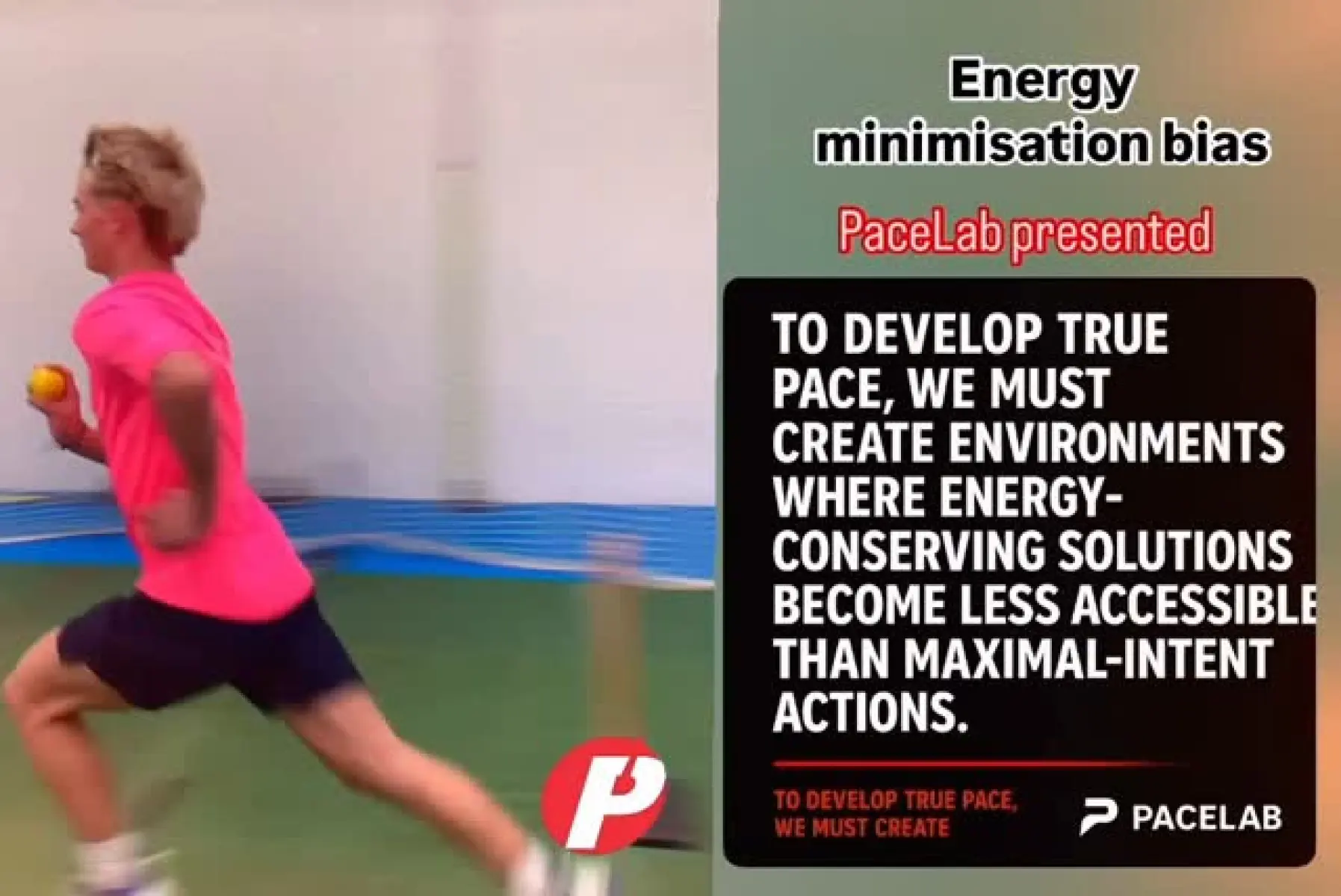Energy Minimisation In Fast Bowling: Overcoming Hidden Bias
Study shows motor bias affects bowling training, revealing gap between practice and games.

Image: Instagram
Recent research has shed new light on an intrinsic challenge in fast bowling: the energy-minimisation bias. A study by Oliveira et al. (2005) revealed that even when bowlers intend to perform at their maximum, their motor system subconsciously opts for energy conservation. This natural law affects not only rapid tasks in the lab but also translates directly to the cricket field, influencing how fast bowlers perform during training and in competitive games.
Understanding The Hidden Brake
The Oliveira study observed that participants consistently undershot targets in high-speed tasks—even when financial rewards were on the line. The researchers discovered that, when the conditions were manipulated so overshooting required less effort, the participants defaulted to the most energy-efficient movement. This means that what many might interpret as a lack of effort is not laziness or poor motivation—it is the body’s natural drive to conserve energy. This phenomenon is critical for fast bowlers, who often feel they are delivering a full effort during practice but may not be achieving true maximum output.
Indoor training environments, typically characterized by low stakes and minimal stress, fail to stimulate the nervous system in the same way live match conditions do. Without proper game-like pressure—such as facing a live batter or operating under the scrutiny of radar guns—bowlers’ motor systems tend to hold back. Coaches and scientists have long observed that practice sessions rarely replicate game-day innovation in performance output. This is because a lower intensity training context does not sufficiently override the in-built energy-saving defaults.
Fast Bowling And The Role Of Context
In fast bowling, the difference between standard practice and competitive performance is striking. Indoor drills often provide a controlled setting that lacks the urgency of real match situations; hence, bowlers may not access their true capabilities. According to insights from PaceLab Limited, combating this energy minimisation bias requires specific training methods that create urgency. Practical drills such as RUN AND GUN RATE bowling, the use of heavy-light contrasts, and contextual accuracy under fatigue are designed to force the nervous system to override its natural conservative tendencies. These techniques aim to simulate the pressures of live play so that bowlers can consistently deliver maximum performance when it matters the most.
Pacelab’s Innovative Training Approach
PaceLab has taken these research insights and integrated them into their comprehensive training system. Their approach is data driven and insists on respecting the scientific foundations of motor control. The training regime not only incorporates methods to force maximum output but also builds on biomechanical fundamentals. Pacelab’s training protocol includes elements such as visual feedback, heavy-light contrast drills, and contextual accuracy challenges that push bowlers beyond their comfort zones. In one of their recent sessions, noted by fast bowling coach Steffan Jones, athletes were put through rigorous drills designed to mimic game pressures. Jones, known for his innovative approach and backed by extensive experience, emphasized that a proper stimulus is essential to trigger full-bowl effort.
An earlier PaceLab post detailed what is known as the Big Four in fast bowling: approach quality, impulse stride, back foot control, and arm speed. These four components form the kinetic chain that allows bowlers to convert raw energy into ball speed efficiently. The phenomenon of energy minimisation explains why even when bowlers think they are exerting full effort, they might subconsciously reserve energy during low-pressure drills. Pacelab’s system, therefore, designs training contexts to replicate the decision-making demands of a real match, ensuring that each stage of the kinetic chain—from the run-up to the final release—is executed at its peak.
Integrating Science With Performance
The scientific attempt to reframe practice sessions reflects a broader understanding of high-performance sports. Beyond the basic mechanics, effective training now relies on simulating the ideal competitive environment. Strategic overload, which is incorporated into Pacelab’s training routines, is used to ensure that bowlers can break free from the natural tendency of the motor system to conserve energy. By creating scenarios that force a bowler’s neuromuscular system to respond with maximum intensity, coaches can effectively neutralize the hidden brake imposed by energy conservation.
Additional insights highlight the importance of interlimb and intralimb coordination. As detailed in other Pacelab posts, achieving a seamless transfer of energy from the lower to the upper body is crucial. If one limb fails to act as an effective brake while another accelerates, the kinetic chain is disrupted. These learnings further support the need for drills that demand not only speed but also precise control and timely force application.
A Call To Embrace The Process
In essence, the energy-minimisation bias is not a flaw but an inherent neurological law. The challenge for modern fast bowlers is learning how to work with this system rather than fighting it. As the Oliveira study and practical implementations by PaceLab suggest, the only way to achieve real game-day performance is to mimic the conditions that force the bowler’s full engagement. Coaches like Steffan Jones are at the forefront of this innovation, guiding athletes to focus on context, intensity, and precise biomechanics in training.
In conclusion, addressing the hidden brake within the human motor system requires both scientific understanding and innovative training techniques. By creating high-stakes, real-match scenarios during practice, fast bowlers can overcome their natural energy-saving bias to consistently achieve peak performance when it counts the most. Trusting the science and following a structured, data-driven process may be the key to unlocking true potential on the cricket field.
Read full bio of Joyce







